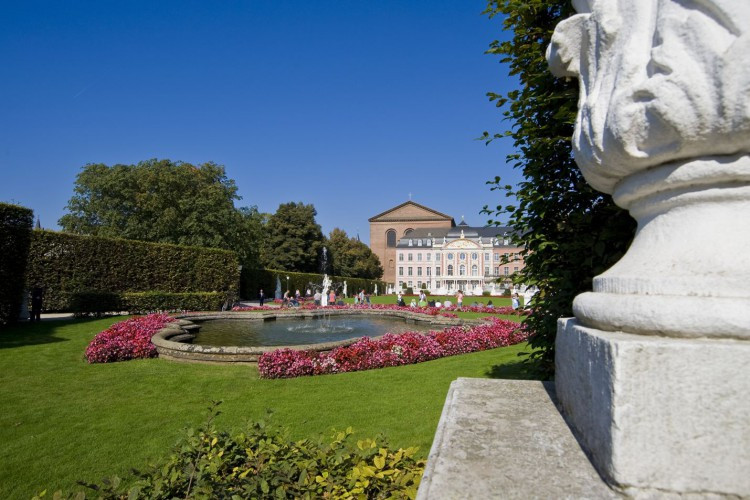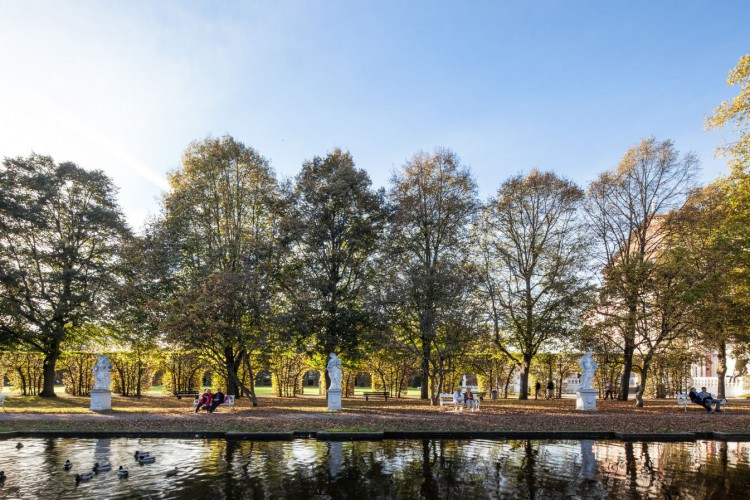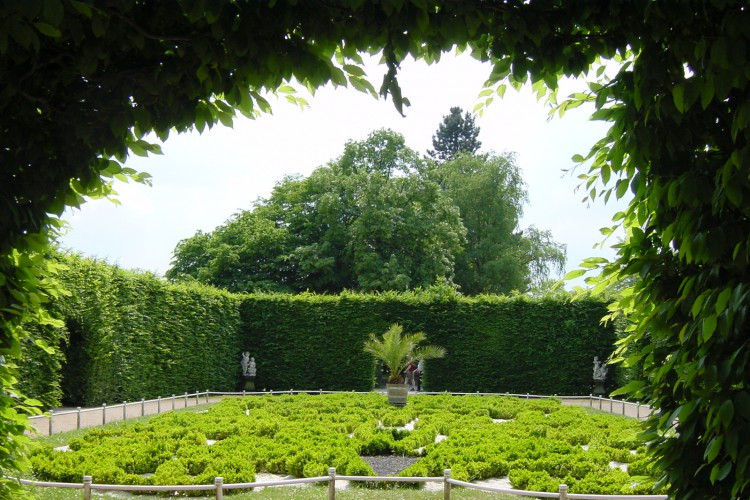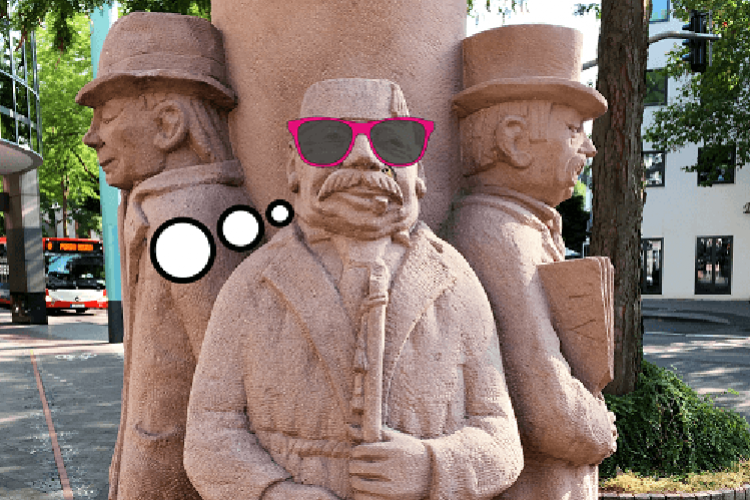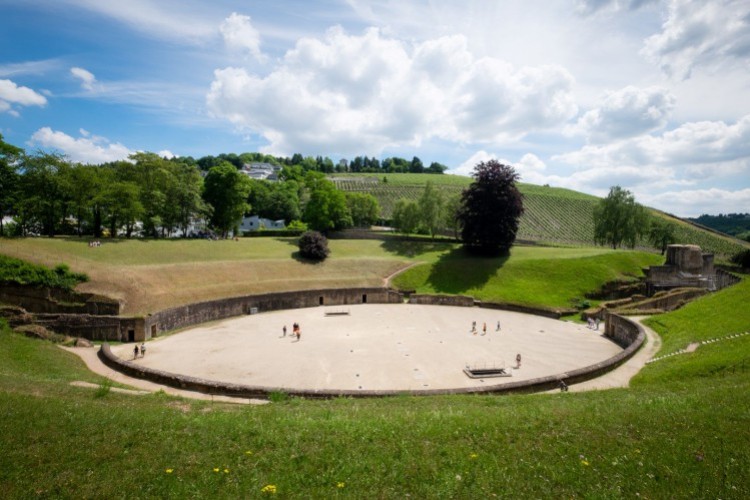Read more
His ‘Spiegelbrunnen‘ fountain, for example, which had first been mentioned in sources in 1761, was rediscovered in 1940, prompting the filigree water feature, whose rotation creates the impression of a tulip calyx, to be reinstated. Visitors today are also greeted by replicas of Tietz’s sculptures of mythological creatures and ruler figures (the originals are housed at the Stadtmuseum Simeonstift City Museum).
The gardens at the Imperials Baths are particularly popular among sunbathers, ballplayers, tightrope walkers and chief BBQers. Yes, the Palace Garden can probably handle showing its age in its front section because it knows how vibrant its back part is. It’s abuzz with life, and anyone who mingles with the people, trees, ducks and geese that peacefully coexist here will feel young again.
A must for: Nature lovers. Relaxers and break-takers. Landscape gardeners, baroque enthusiasts and water-feature aficionados.
Water: 30%
Baroque: 60%
Greenery: 70%
PSSSST! THE INSIDER TIP:
The relief of a very special Trierer, Franz Weissebach, lies hidden in the medieval city wall in the back part of the Palace Garden. His benign smile alone shows that Weissebach, the great-great-great uncle of Günther Jauch, was as much of a witty contemporary as his descendant. Weissebach, who died in 1925, bequeathed part of his assets to the city, albeit with an order for them to be used to build a crematorium in the municipal cemetery – knowing full well that this would be unthinkable in the devoutly Catholic Trier. Weissebach gave the displeased city council a way out of the dilemma: If, after five years of specific debate, it still refused to build the crematorium, the money could be used to create a public park at the Electoral Palace. And so it was that, after a five-year ‘crematorium debate’, the present-day Palace Garden was created in the 1930s.
The gardens at the Imperials Baths are particularly popular among sunbathers, ballplayers, tightrope walkers and chief BBQers. Yes, the Palace Garden can probably handle showing its age in its front section because it knows how vibrant its back part is. It’s abuzz with life, and anyone who mingles with the people, trees, ducks and geese that peacefully coexist here will feel young again.
A must for: Nature lovers. Relaxers and break-takers. Landscape gardeners, baroque enthusiasts and water-feature aficionados.
Water: 30%
Baroque: 60%
Greenery: 70%
PSSSST! THE INSIDER TIP:
The relief of a very special Trierer, Franz Weissebach, lies hidden in the medieval city wall in the back part of the Palace Garden. His benign smile alone shows that Weissebach, the great-great-great uncle of Günther Jauch, was as much of a witty contemporary as his descendant. Weissebach, who died in 1925, bequeathed part of his assets to the city, albeit with an order for them to be used to build a crematorium in the municipal cemetery – knowing full well that this would be unthinkable in the devoutly Catholic Trier. Weissebach gave the displeased city council a way out of the dilemma: If, after five years of specific debate, it still refused to build the crematorium, the money could be used to create a public park at the Electoral Palace. And so it was that, after a five-year ‘crematorium debate’, the present-day Palace Garden was created in the 1930s.

